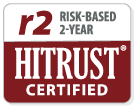By Matt Lambert, M.D., CMO, Curation Health
These are challenging times for those of us in health care. As we face COVID-19 head-on, demands for care are high, while supplies like protective masks and ventilators are low.
Chances are that when we emerge from this crisis, our health care system will look very different than it does today especially when it comes to telehealth.
As health care providers and health plans face the complexities of day-to-day patient care during the COVID-19 outbreak, there are a few immediate things to consider. Most notably, doing everything they can and using every tool at their disposal to predict those patients within their population of care which are most likely susceptible to COVID-19.
Identify, Engage, and Support At-Risk Populations
The need to identify and engage with these patients before they step foot into their local doctor’s office or hospital is mission critical in the broader effort to flatten the curve. Creating patient registries that are focused on the most vulnerable individuals will allow providers and health plans to prioritize key services that will help protect these patients – services like:
- Telehealth doctor’s visits instead of in-person consults;
- At-home delivery of medications instead of stepping foot into well-trafficked pharmacies; and
- At-home food delivery services instead of long visits to multiple grocery and big box stores that are already experiencing frustrating shortages.
Provide Clinicians with Point-of-Care Tools that Make Quality Patient Assessment Faster
In addition to proactively identifying patients at the highest risk for COVID-19 before they even seek out care, providers and health plans must also arm clinicians with the appropriate tools at the point-of-care to better identify which patients are at the highest risk. Providing clinicians with fast, simple access to the most critical patient information enables them to act faster and provide higher quality care.
Despite all the bells and whistles available through advanced electronic health records, the reality is that clinicians are still struggling to get fast, accurate patient information. Instead, they are getting reams of patient data and being asked to cull through all of that information in an increasingly succinct patient visit and then make real-time decisions without necessarily having access to the most important information about a patient’s history and comorbidities.
While we really can’t minimize the everyday, typical needs of patients – we can be proactive and agile as we face the epidemic before us. Leveraging risk analytics to identify, engage and support at-risk populations – while also providing clinicians with tools that make decision-making faster and easier so that they can make more informed care choices in real-time can and will go a long way toward protecting patients and supporting those that care for them.

